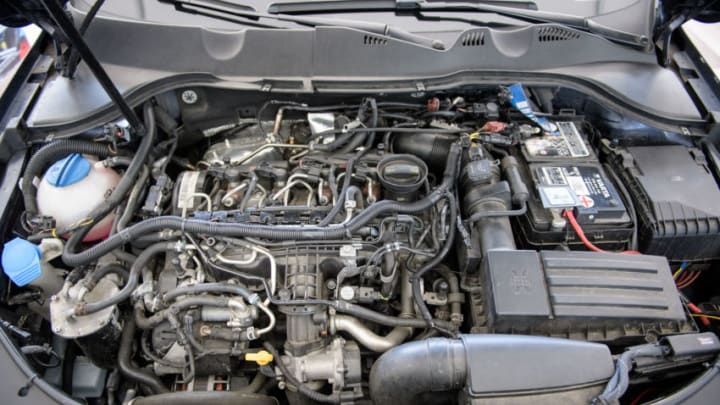The Forgotten Fluids
TIme stamps:
0:22 WasherFluid
0:35 Motor Oil 2:21 Coolant
3:34 Brake Fluid
4:10 Automatic Transmission fluid
4:58 Manual Transmission Fluid
5:23 Power Steering Fluid
6:00 What about EVs?
Other fluids never get any air time, but they are arguably as important. Engine and transmission failures are extremely expensive, but so can the replacement of other major components, should they fail. Luckily, staying on top of fluids is the best way you can keep everything in tip-top shape. (And it’s free, thereby making it a cornerstone highlight of the Women ‘n’ Wrenches initiative. Maintenance isn’t always expensive.)
It starts to get a little more confusing now, as we add different components like checking coolant, power steering fluid, and brake fluid; but once you locate those components, checking them is as simple as checking the oil – in fact, its done in almost the exact same way. (Sometimes, it’s even easier!)
You may have additional fluids to worry about, but that’s why you, as a responsible vehicle owner, know exactly where your owner’s manual is, right? Coolant, power steering fluid, and brake fluid will be our primary concerns right now.
Coolant
Coolant inhibits internal corrosion and provides you with freeze over protection in the winter, and keeps your engine from boiling over in the summer. Caution: Coolant is under pressure when hot, and SHOULD NEVER BE CHECKED WHEN WARM! Cooling systems are pressurized, and pressure increases the boiling point. Don’t earn yourself a life-lesson the hard way – other people have already gone down that road for you.
The coolant used to be checked in the radiator, but now we have “overflow” tanks that hold additional coolant and prevent excess from leaking onto the road beneath you. If you have an overflow bottle, you can usually check the level by looking at it through the transparent container. There should be a HOT line, as well as a COLD line (or something to the effect of a hight and a low level).
As long as your coolant level is between those two marks, you’re exactly where you need to be. (NOTE: That level may fluctuate depending on engine temperature.) There are a few different types of coolants on the market today, and getting the proper coolant for your vehicle is also important. Green coolant was once the industry standard, but now they have red and blue coolants as well. Women ‘n’ Wrenches will cover all of this fun stuff later.
Brake Fluid
Brake fluid is another fluid that used to be so simple. The advancement of braking systems means there are specific fluids now that need to be used for different systems. Women ‘n’ Wrenches is here to demystify this nonsense. The three main types are DOT 3, DOT 4, and DOT 5. DOT 3 and 4 both absorb water, while DOT 5 doesn’t. None of the “why” matters right now, but it’s worth pointing out that there is a difference, and you need to know which one is right for you.
The brake fluid reservoir is usually located on the driver’s side of the firewall, right on the other side of the steering wheel (give or take). These reservoirs are now usually clear, and you don’t even have to take the cap off to check it anymore! You may need to grab a rag and wipe the dirt away, but you should find fluid level markings on that reservoir to guide you. (PRO TIP: Use a flashlight and shine it into the opening of the reservoir to highlight the fluid level if you have a hard time seeing it.)
Power Steering Fluid
This is the next fluid you should concern yourself with, and it’s also the next fluid to become obsolete. Modern cars are starting to incorporate electric power steering systems that do not use power steering fluid anymore. If this case applies to you, forget this section.
If you do have power steering fluid, chances are, the reservoir is easily accessible, and checking it is as simple as looking at the side of the bottle. Other designs may require you to unscrew the cap and measure the level with a dipstick. It’s essentially as simple as the engine oil to check.
Locate this bad boy in your owners manual; give him the attention he demands, and your power steering system will last you a lifetime. When this overlooked fluid is left to its own devices, it simply recirculates dirty fluid through your steering system, over and over again.
It should be noted here than you reasonably could go your entire life without even thinking about power steering fluid, and never have an issue. But you’re not reading this because you want a maintenance-free life of bare-minimum effort, and I’d be doing you an injustice by encouraging you to overlook it. It takes just another two seconds for the peace of mind that you’re doing your car a solid. (It’ll take care of you if you take care of it.)
The video below is very generic, but it should serve to outline the simplicity of just “checking” your fluids, and you’ll get an idea of where they “hide” everything!
